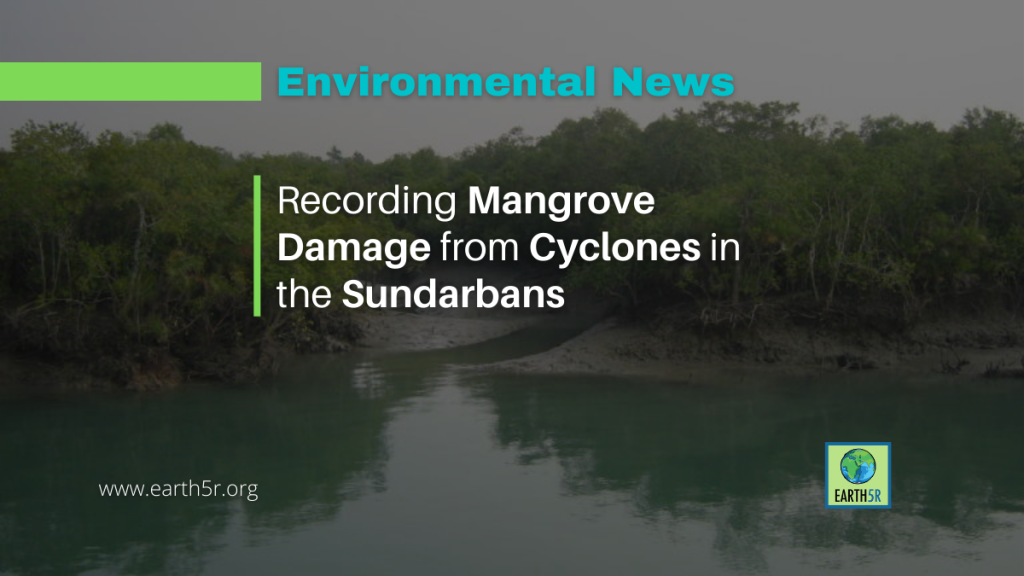
Recording Mangrove Damage From Cyclones In The Sundarbans
Environmental News from India:
- In two separate studies, scientists have harnessed satellite images to capture changes in the Sundarbans mangroves and the shores that harbor them, following cyclones. Remote sensing using satellite images can help long-term monitoring and tracking of changes in the health of such ecosystems.
- Frequent cyclone damage slows the recovery of mangroves and changes the forest composition in comparison to other regions that didn’t witness many cyclones.
- Of the three recent cyclones (Bulbul, Fani, and Amphan), cyclone Amphan caused the most damage to the Sundarbans mangroves with the highest mangrove loss along shorelines that were eroding over the past 35 years.
- Eroding shorelines have different features that must be accounted for in mangrove forest management, say researchers.
Satellite images of the Sundarbans mangroves along the Bay of Bengal, that capture changes before and after tropical cyclones, are helping make sense of mangrove damage from extreme weather events and create records of the impacts of cyclones on these ecosystems.
Recent studies flag the importance of continuously monitoring these ecosystems that are at risk due to climate change, coupled with the legacy of historical shoreline changes from human activities.
The Sundarbans mangrove ecosystem in India, for example, is classified as endangered in the IUCN’s Red List of Ecosystems framework. Historical threats came from clearing mangroves dating back to the 1800s and declining fish populations. Ongoing threats like climate change and reduced freshwater supply are heaping pressure on this ecosystem. New research shows that Sundarbans mangroves are beginning to erode faster under the combined assault.
To read top environmental news from India, please visit https://earth5r.org
Source: Mongabay




